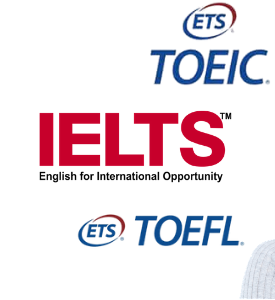TOEFL IELTS TOEIC: how are they different?

Source: https://www.toeicjakarta.com/perbedaan-toeic-toefl-dan-ielts/
English is a language that is not only used for communication but also in academic and professional settings; therefore, it possesses a remarkable quality that sets it apart from other languages. Because English is a global language spoken by a significant number of people in many different countries, people who speak English, particularly those who speak English as their second or foreign language, need to take tests to determine their level of English proficiency. TOEFL, IELTS, and TOEIC are examples of English examinations that see widespread use due to the purposes for which they were developed. They are official English proficiency examinations with internationally recognized certificates. Now, let us see their purposes and how each test is unique from the others.
TOEFL, which stands for Test of English as a Foreign Language, is a proficiency exam for the English language, whose certificates are typically used to apply for scholarships, enroll in universities, and enter government institutions. The four sections of the TOEFL are Reading, Listening, Writing, and Speaking.
Then IELTS, which stands for International English Language Testing System, is a more widely administered English proficiency exam than the TOEFL. This test certificate can be utilized for educational purposes, such as applying for scholarships and enrolling in college. In addition, it can be used to create work visas and transfer citizenship. The four sections of the IELTS are Reading, Listening, Writing, and Speaking. There are two IELTS forms. The Listening and Speaking sections of both forms are identical. However, there are two separate tests for the Reading and Writing sections. First, the academic IELTS incorporates concepts and materials covered in undergraduate, graduate, and professional programs. Second, the IELTS General Training utilizes topics and material from commonplace books, newspapers, and periodicals.
And then, TOEIC, which stands for Test of English for International Communication, began in the 1970s. The Japanese Ministry of International Trade and Industry requested that ETS create a test for business use. They wanted to determine whether non-native English speakers could conduct business in English. The TOEIC is based on workplace-relevant English. Test English proficiency for working abroad, teaching English, and business, industry, and commerce purposes. This certification is not intended for scholarship applications or college entrance. However, the examination does not require knowledge of specialized business terms. The questions are based on real-world scenarios like attending a business meeting.
In summary, the academic and professional matters use of English makes it a unique language. Numerous countries have a large English-speaking population, either as a second or foreign language must take tests to determine their proficiency. Due to their respective purposes, TOEFL, IELTS, and TOEIC are well-known English examinations—official English proficiency tests with internationally recognized certificates.
Sources:
https://learningenglish.voanews.com/a/toefl-ielts-toeic-comparing-the-tests/2873821.html
https://blog.schoters.com/perbedaan-toefl-ielts-dan-toeic
Comments :